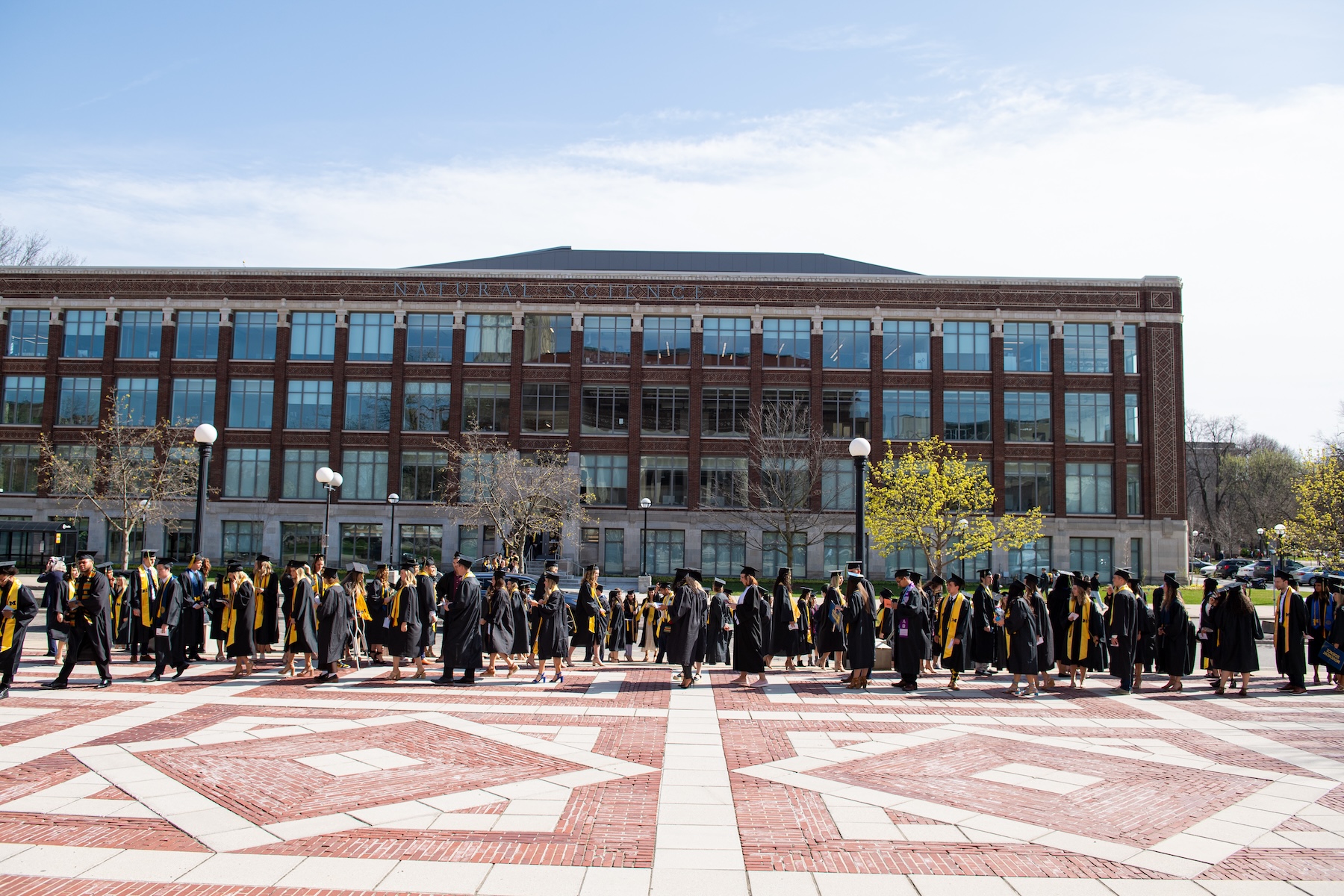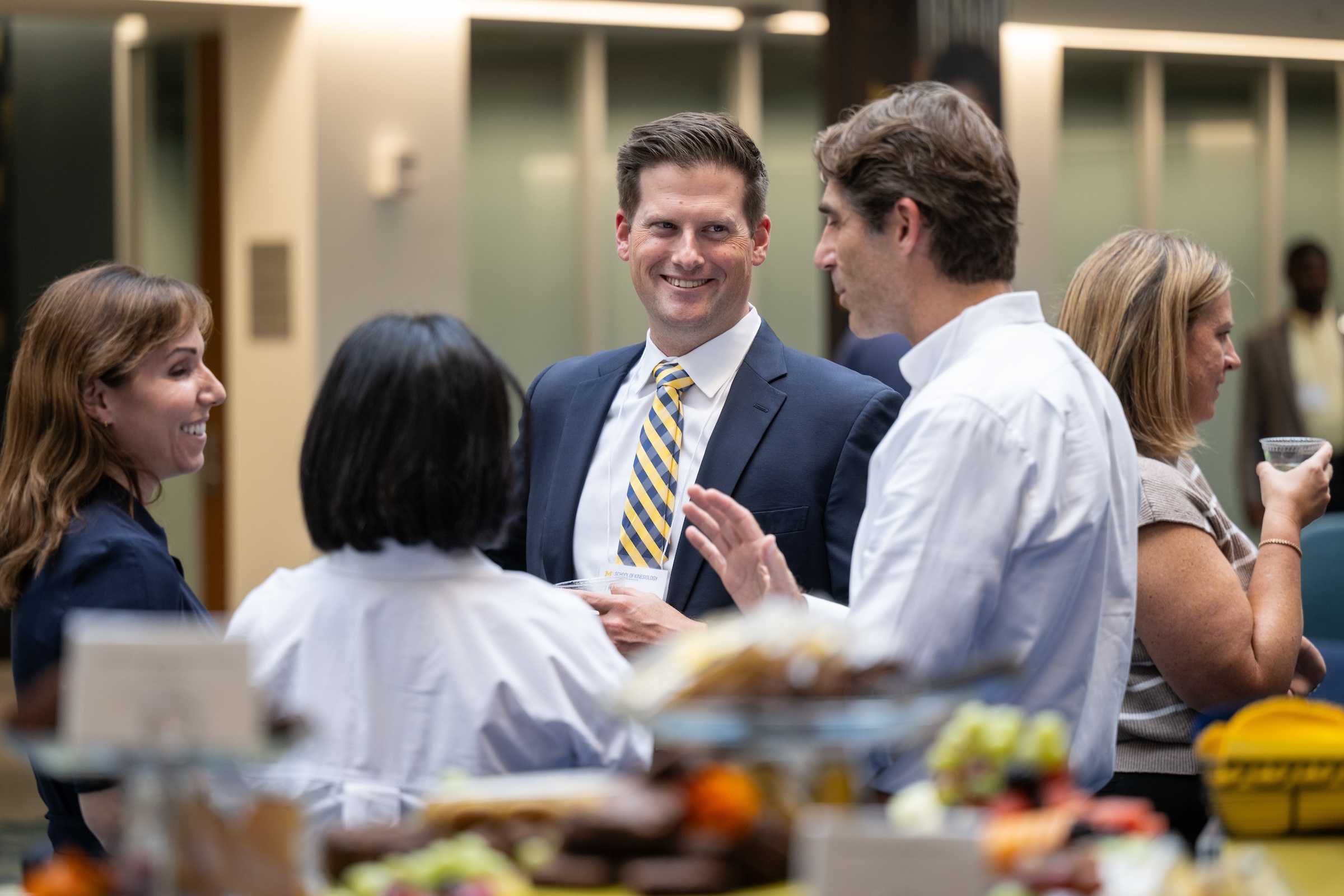
 Back to News
Faculty Excellence
Back to News
Faculty Excellence
In our growth era

The U-M School of Kinesiology had a plan to grow — steadily, organically, strategically.
Step one: Move into a historic yet beautifully redesigned space (the old Kraus Natural Science Building) on the Diag. This would not only allow the school to fit all its faculty and staff under one roof for the first time but also further increase its footprint to match its growing status on campus.
Step two: Hire more faculty, in part around specific research topics, like sports analytics and exercise and cancer, that current faculty members had proposed as areas where they’d like to raise the school’s profile.
“We were very intentional,” says SoK Dean Lori Ploutz-Snyder. “But lo and behold, if that wasn’t stymied by COVID.”
The hiring freeze that U-M initiated at the beginning of the pandemic meant SoK’s best-laid plans had to be paused. The delay was one of several factors that has created pent-up demand for more SoK faculty, including rising student applications, the transition or creation of select school programs, and the announcement of high-profile retirements.
But over the past few years, SoK hit play again. In 2023, the school hired a record four lecturers and eight faculty, many of whom specialized in the research areas in which SoK had wanted to expand.
And in 2024, SoK launched faculty searches for every program, including ones for an endowed position and a broad inquiry to find senior faculty who might fit into the SoK ethos in ways the school couldn’t yet envision when mapping out priorities five years before.
“We’ve interviewed more people this year than we ever have,” Ploutz-Snyder says. “We wanted to get some real force multipliers that would elevate parts of the school or even the whole school.”
“It’s been a whirlwind,” says Lori Helvey, executive director of finance, planning and operations. “But we’re really trying to get ourselves up to the capacity we’ve been planning for over the last eight years.”
Supply and demand

It’s become more competitive to get into the U-M School of Kinesiology over time, with both graduate and undergraduate application numbers rising over the past several years.
“People want to come here,” says Charlene Ruloff, graduate student affairs manager. “They recognize the value of a kinesiology degree from the University of Michigan.”
Enrollment has grown, too. Although there are limits on the number of new undergraduates each fall because U-M guarantees housing for first years, the school has found creative ways to expand.
In 2019 and 2022, SoK created winter-start programs, inviting select applicants who were waitlisted in the fall to begin their U-M education in the winter and take spring and summer classes to catch up with their peers by their sophomore years. SoK’s athletic training program transitioned to a master’s program, as mandated nationally, in 2021, freeing up more undergrad spots in the other programs. And 2024 saw the highest number of new SoK transfer students in the last decade.
But more students means more class sections and thus more faculty required to teach the courses. Some of SoK’s 2023 hires were clinical faculty intended to focus mostly on teaching because the demand was so great. The addition of more spring and summer classes for the winter-start and athletic training programs particularly affected logistics for the school, with the number of courses offered during those semesters rising from two in 2015 to 25 in 2024.
“We never used to ask about spring and summer when we were advertising positions,” says Jacquie Niven, SoK’s director of human resources. “Now we tell candidates they have the opportunity to earn some additional money in the spring and summer because we have that need.”
Under new leadership

New sport management program chair Brian McCullough chats with attendees at this year's Homecoming mixer.
Retirement announcements from several long-tenured faculty have only added to the urgency in hiring; there became an imperative to find not only fresh faces but also experienced academics who could help lead SoK’s next phase of growth and innovation.
Yet the school looked at these upcoming transitions as an opportunity to go beyond filling veteran spots. By sending out calls for senior faculty in any area of kinesiology, SoK hoped to diversify — and further elevate — its expertise.
“We wanted to hire people who were doing more innovative, cutting-edge research,” says sport management associate professor Kate Heinze and one of the chairs of the search committee for the Bickner Chair, a prestigious endowed professorship position open to the senior-level candidates, “people who had ideas about the kinds of things they could do if they came to U-M with its resources and potential partnerships and interdisciplinary collaborations.”
“But it’s really tricky at the senior level to get folks to take a sincere interest because of family and all sorts of things,” she continued. “Our HR staff did a fabulous job.”
SoK manager of academic human resources Jess Jones is in charge of faculty searches. She and the rest of the team wanted to get as many people involved in the process as possible to help candidates understand SoK's culture right from their first interaction.
Staff from all areas of the school showed the candidates around. Students from different majors and degree levels sat in on candidates’ presentations and had lunch with them. Faculty from each program were on the search committee for the Bickner Chair to make sure that the candidates for that position could complement multiple areas.
“We’re all getting a say in the people that we bring here to define how we want to see U-M Kinesiology going forward,” Jones says. “It’s been more challenging to organize because there are more people involved, but I believe it's been valuable and demonstrated that we’re all invested in the growth and the vision.”
Besides being more inclusive, the approach was also effective. SoK hired three new program chairs (who are leading the movement science, applied exercise science, and sport management programs, respectively), including one who is serving as the Bickner Chair; an athletic training clinical faculty member; and the school’s first position through the Michigan Program for Advancing Cultural Transformation (M-PACT), which recruits faculty whose research, teaching, and service interests are underrepresented in health care.
“The growth has been explosive but in a good way,” says Niven.
“I hope the trend continues for the next couple of years, so we can continue to deliver our curriculum in a first-class way,” says Ploutz-Snyder.